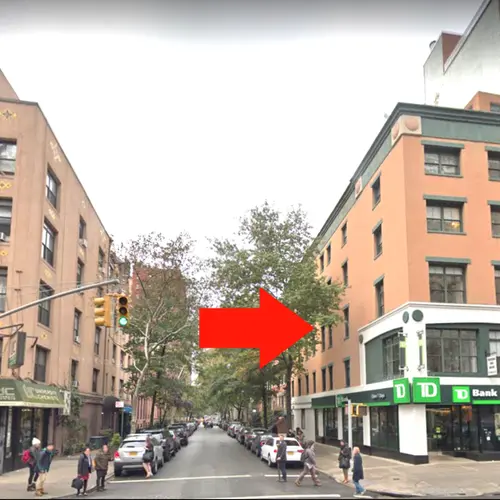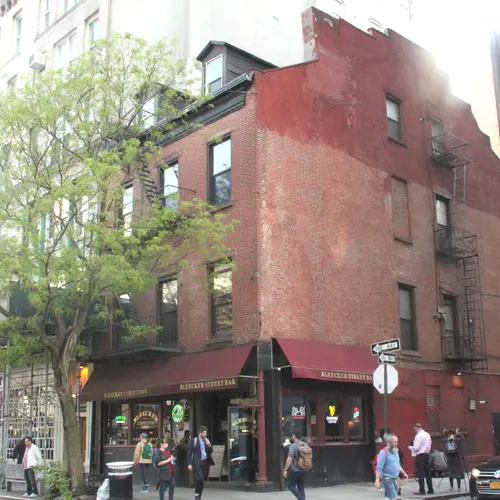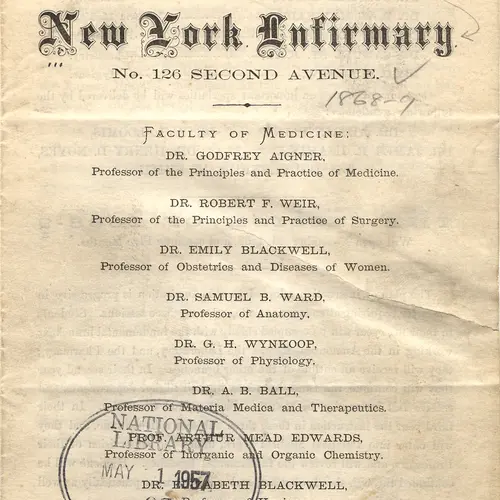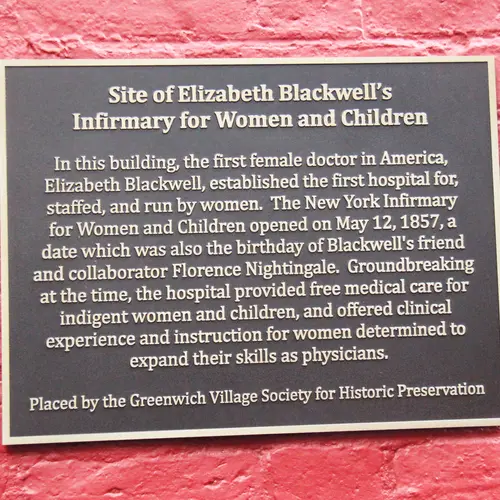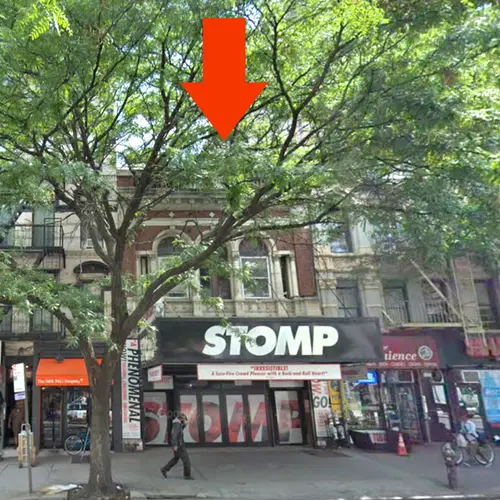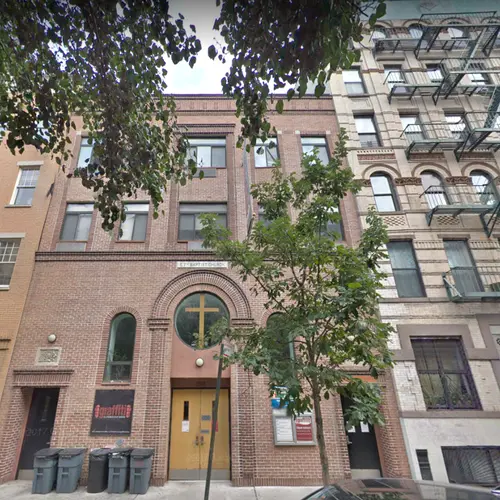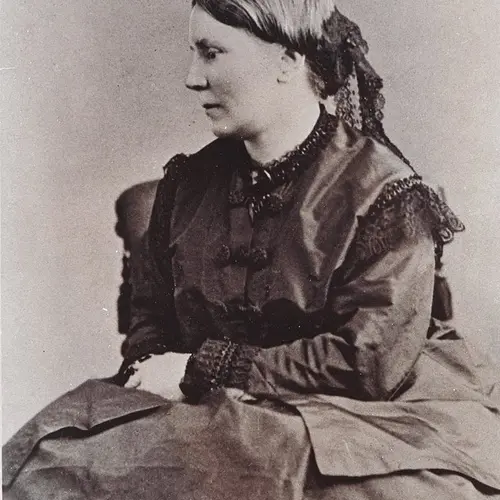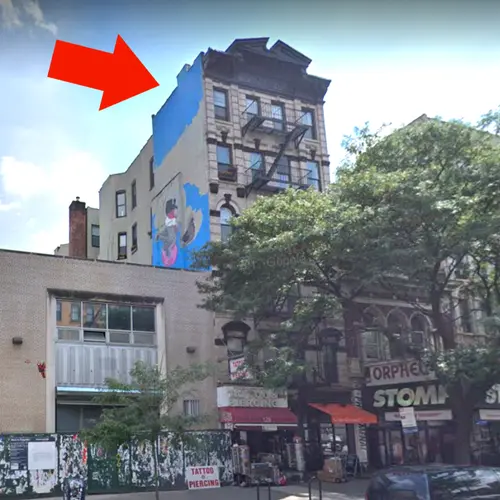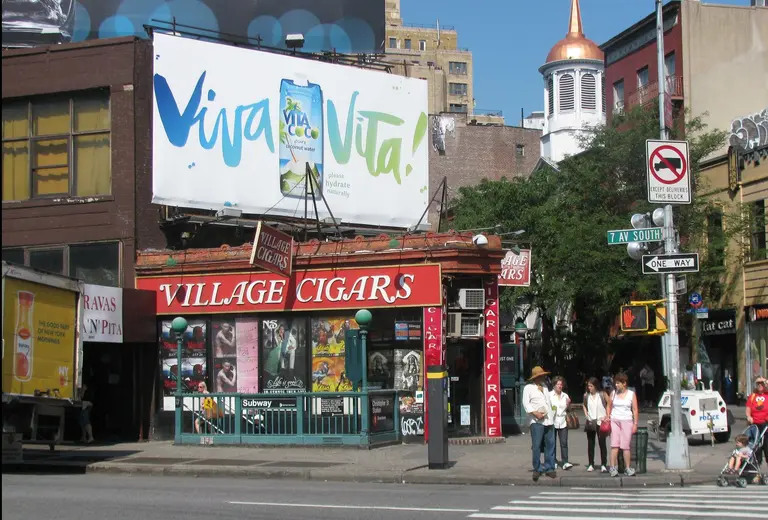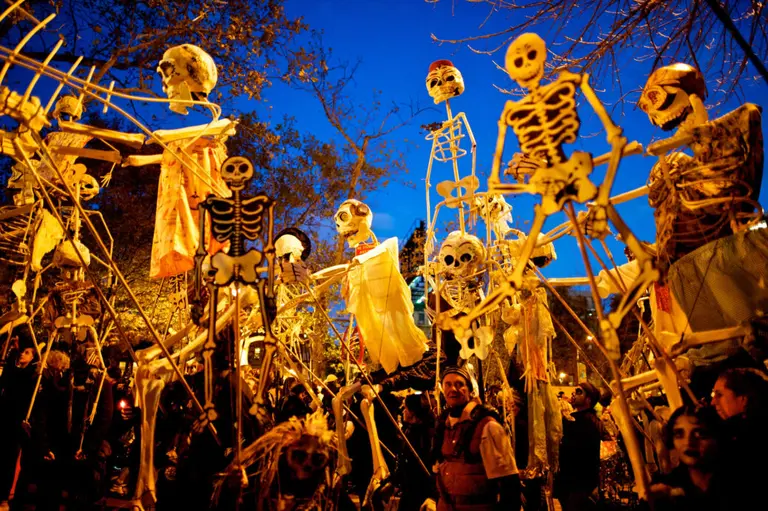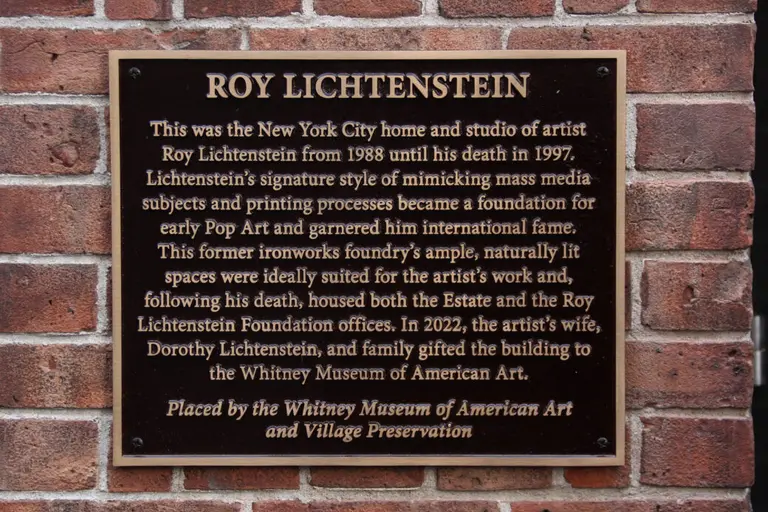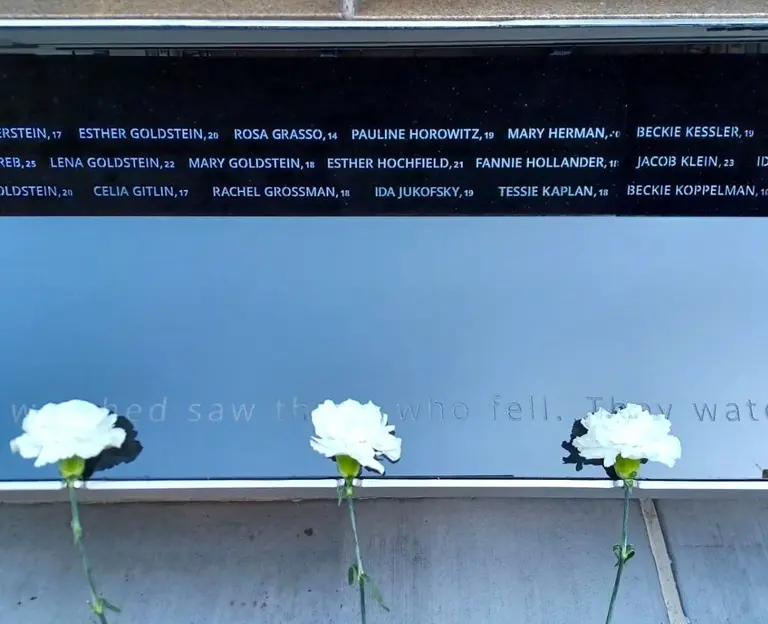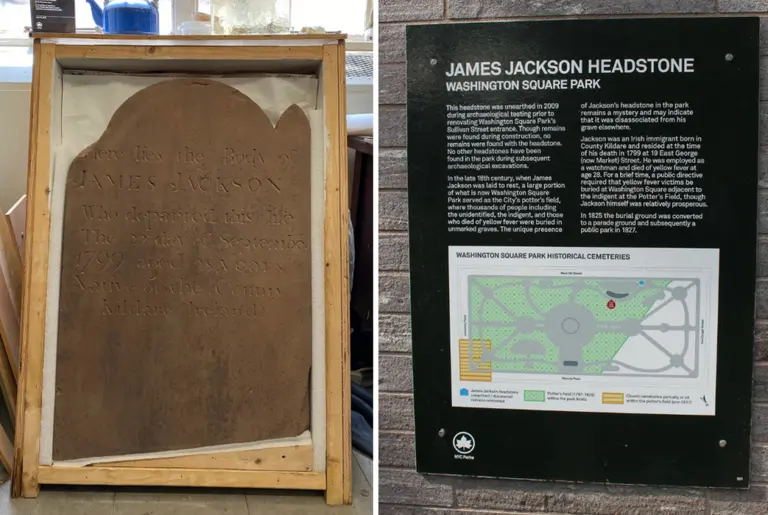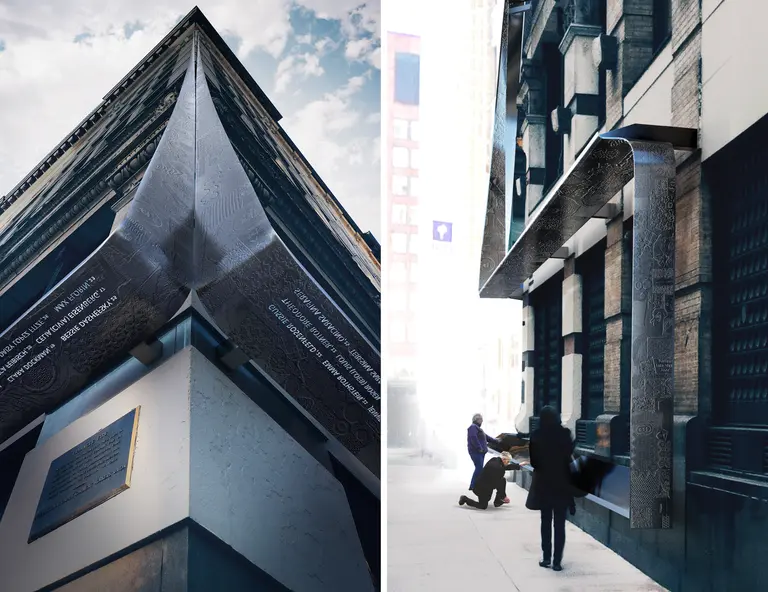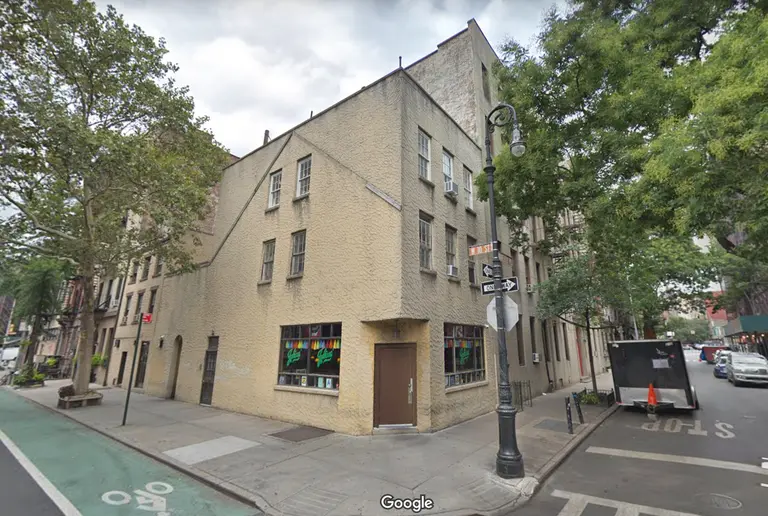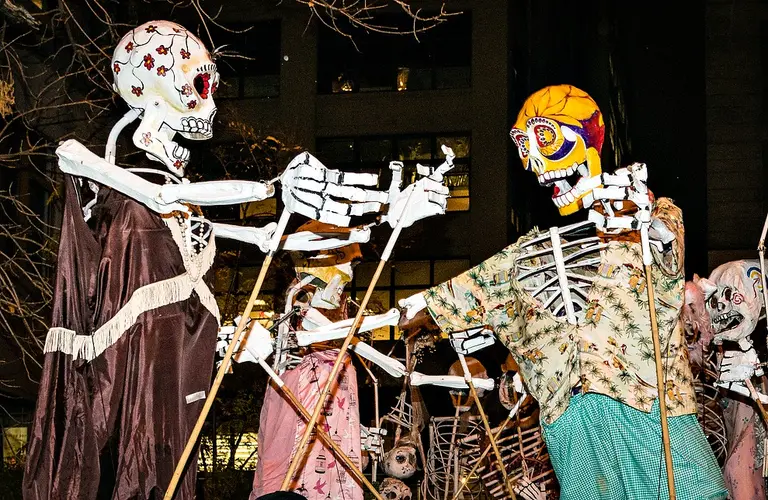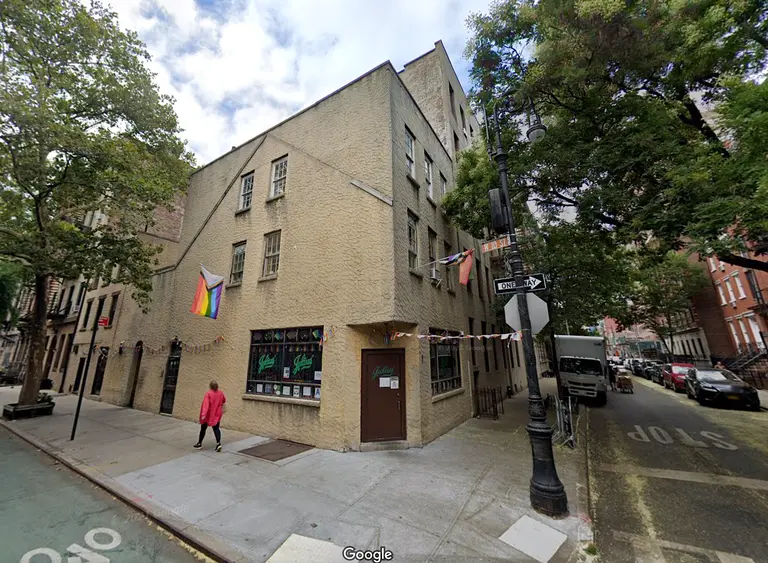Elizabeth Blackwell’s NYC: The historic sites where America’s first female doctor made her mark
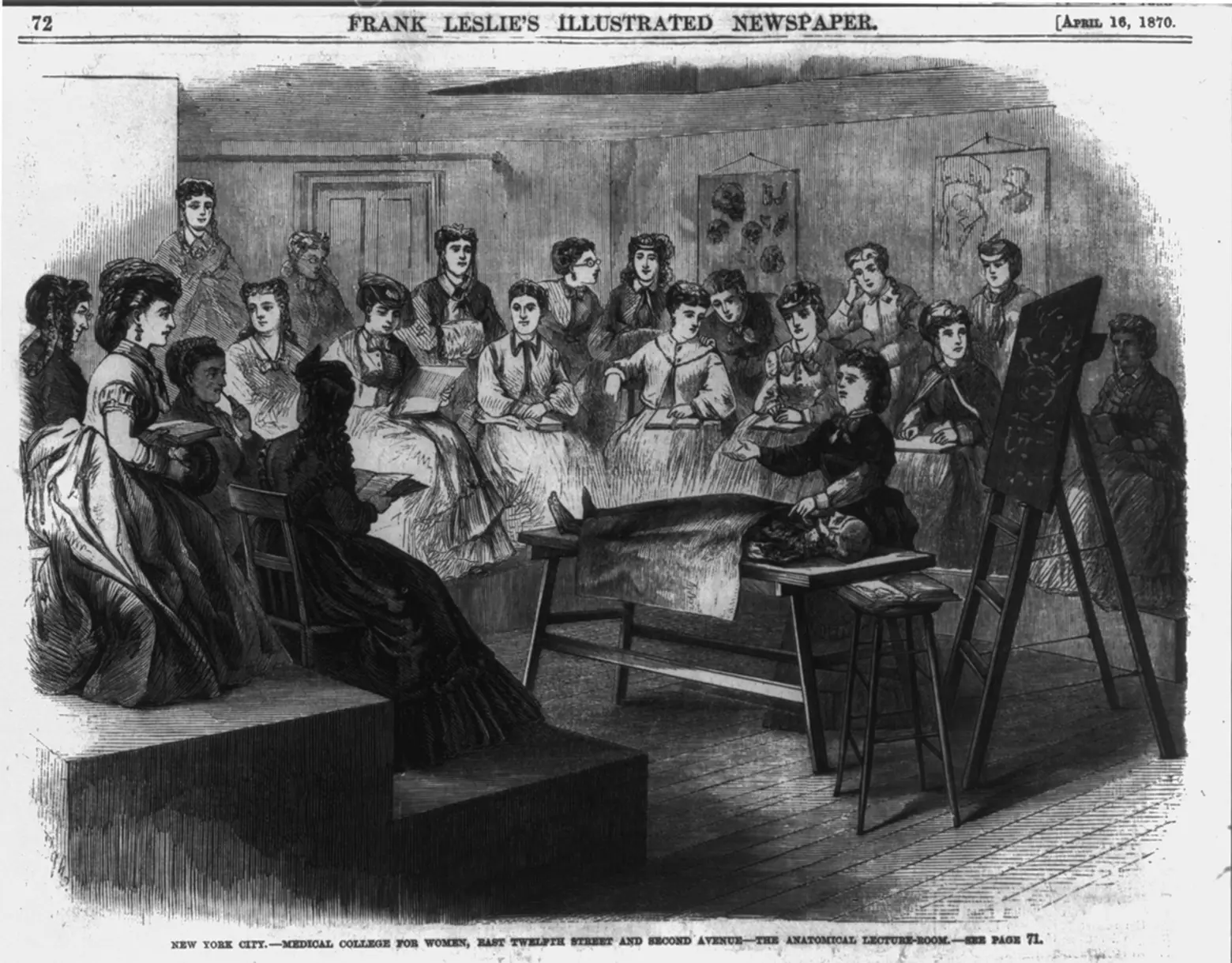
An 1870 newspaper illustration of Elizabeth Blackwell giving an anatomy lecture alongside a corpse at the Woman’s Medical College of New York Infirmary. Courtesy of the U.S. Library of Congress.
One of the most radical and influential women of the 19th century changed the course of public health history while living and working in Greenwich Village and the East Village. Elizabeth Blackwell, America’s first female doctor, established cutting-edge care facilities and practices throughout these neighborhoods, the imprint of which can still be felt to this day in surviving institutions and buildings. In fact, one recently received a historic plaque to mark this ground-breaking but often overlooked piece of our history.
Elizabeth Blackwell home and medical office
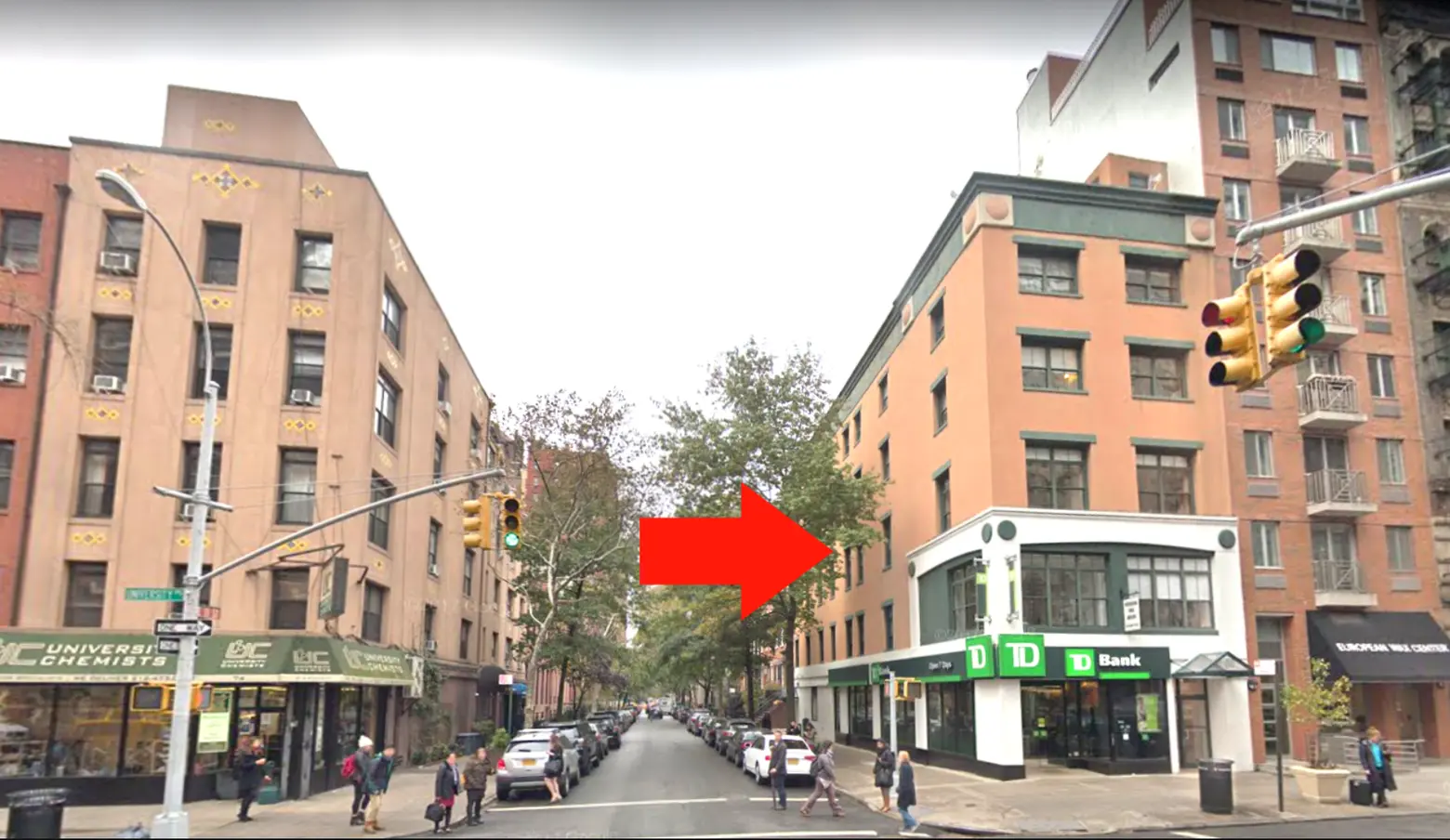 Google Street View of 80 University Place
Google Street View of 80 University Place
At 80 University Place at 11th Street in Greenwich Village stands a building which housed the former home and first medical office of. Elizabeth Blackwell. After receiving a medical degree from Geneva College in 1849, Blackwell was denied opportunities to practice medicine because of her gender. In 1851, she moved to New York City and rented a floor at the building still located here, which was at the time numbered 44 University Place. Tired of being refused work opportunities, Blackwell began using the building as her own medical office, as well as her home.
Despite insults and objections from her landlady and neighbors, Blackwell began providing medical services to patients, most of whom were females and members of the local Quaker community. Elizabeth Blackwell’s legacy of inspiring and empowering women to enter the medical field began during this early phase of her career that unfolded at this site.
Present-day 80 University Place was originally built as a house and later became a hotel; over the years the building has undergone major alterations, including the addition of the current postmodern façade around 1990, but is the same building Blackwell lived and worked in.
New York Dispensary for Poor Women and Children, 207 East 7th Street
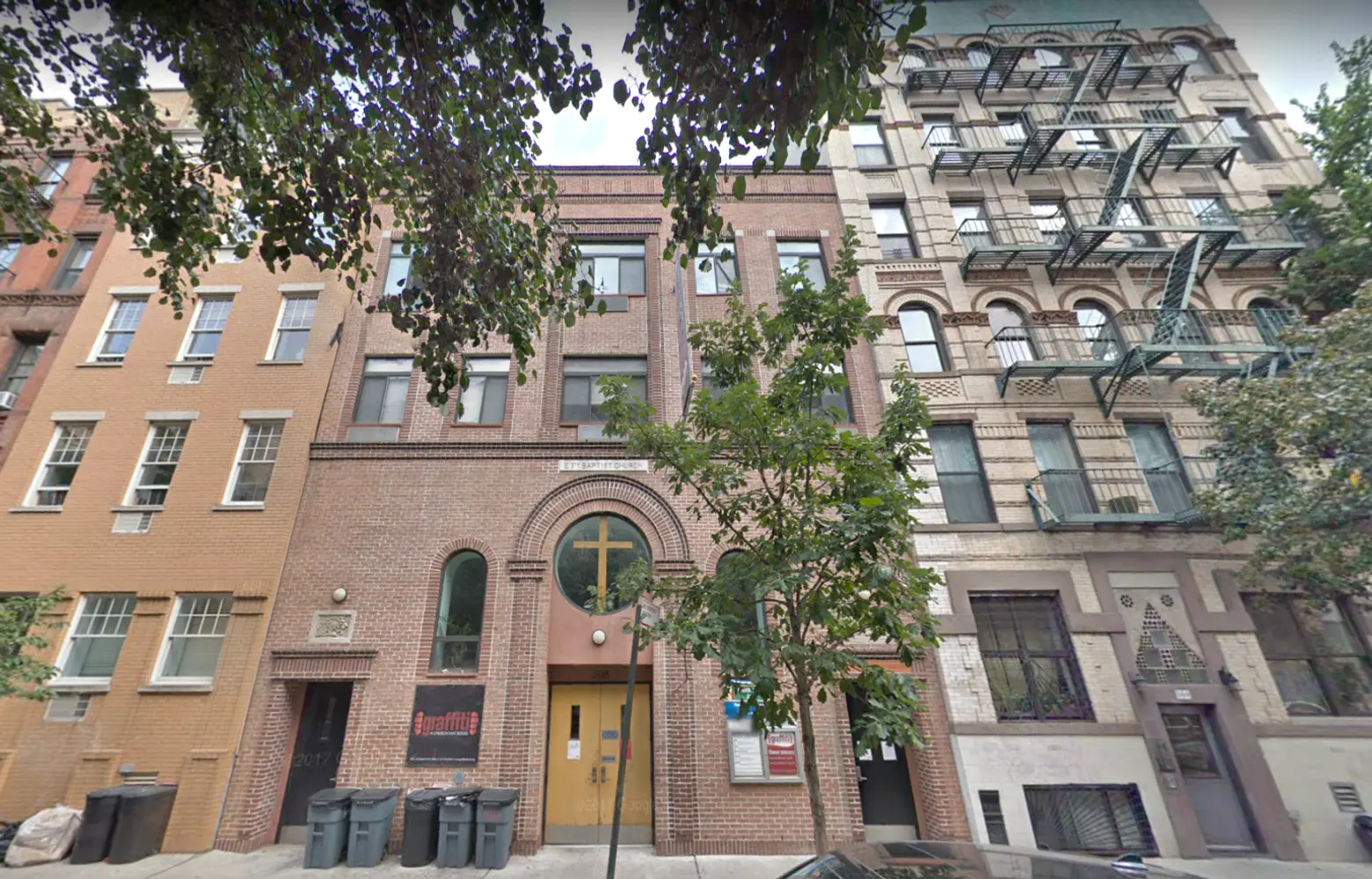 Google Street View of 207 East 7th Street today
Google Street View of 207 East 7th Street today
Early in her medical career, the dire conditions of the poor immigrant districts surrounding her attracted Blackwell’s attention. Blackwell decided to open her own dispensary to address some of the myriad shortcomings she saw in the care her neighbors were receiving. But she found it very difficult to find a space for such a practice. When someone finally allowed her to rent a room, all the other boarders left, scandalized at having a “lady doctor” as their neighbor.
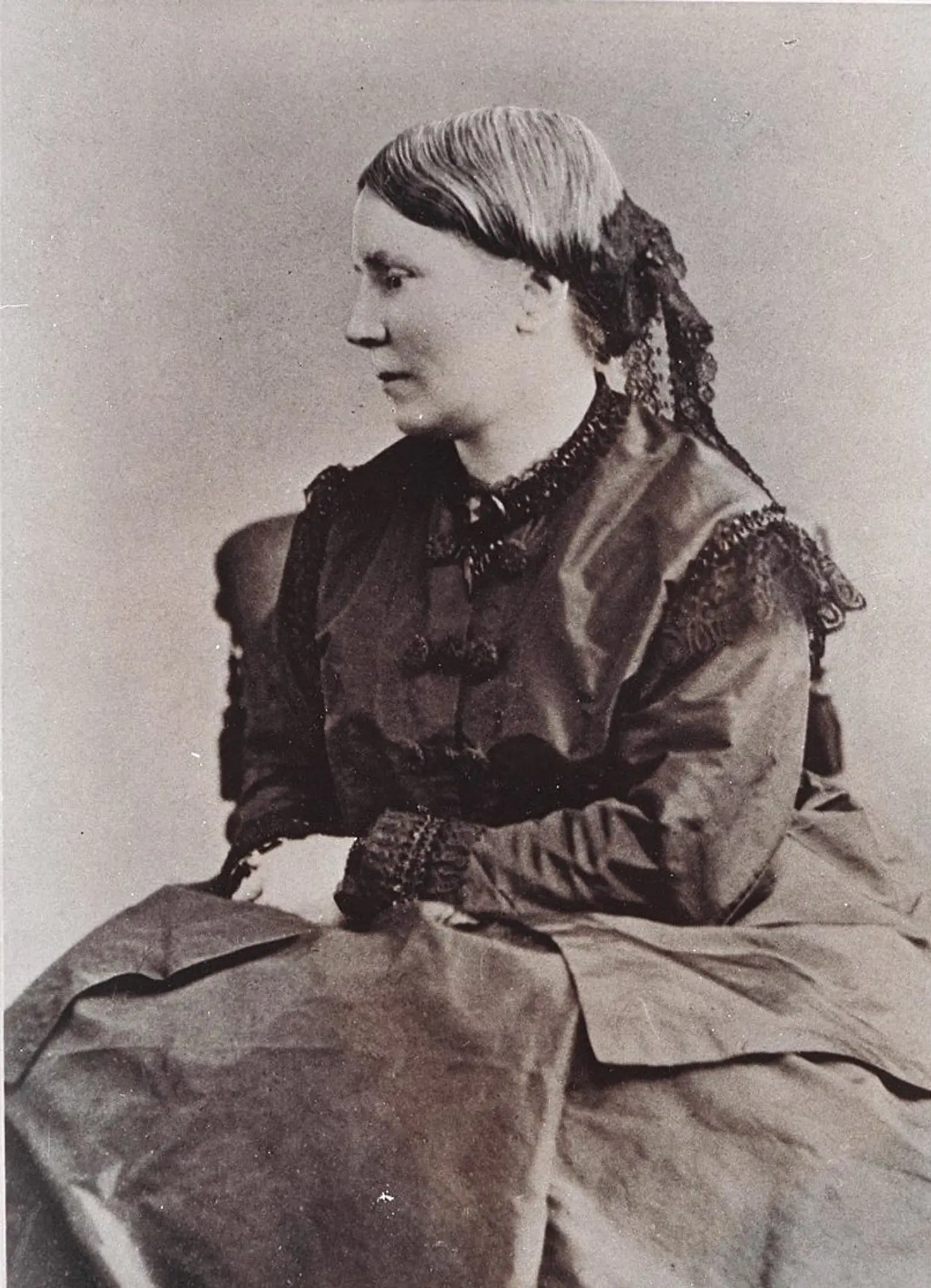 Elizabeth Blackwell c. 1850-60, via Wiki Commons
Elizabeth Blackwell c. 1850-60, via Wiki Commons
Thus, in 1853, Blackwell was forced to rent her own house at 207 East 7th Street, living in the attic and using the main room for treating patients. Called the New York Dispensary for Poor Women and Children, its first annual report announced that its purpose was to “give to poor women an opportunity of consulting physicians of their own sex.”
The woman doctors at the Dispensary were highly aware of the relationship between health, socio-economic conditions, and gender. Today’s New York Downtown Hospital is the extension of Blackwell’s infirmary which began its life here. The building which housed the dispensary has since been demolished.
New York Infirmary for Women and Children, 58 Bleecker Street
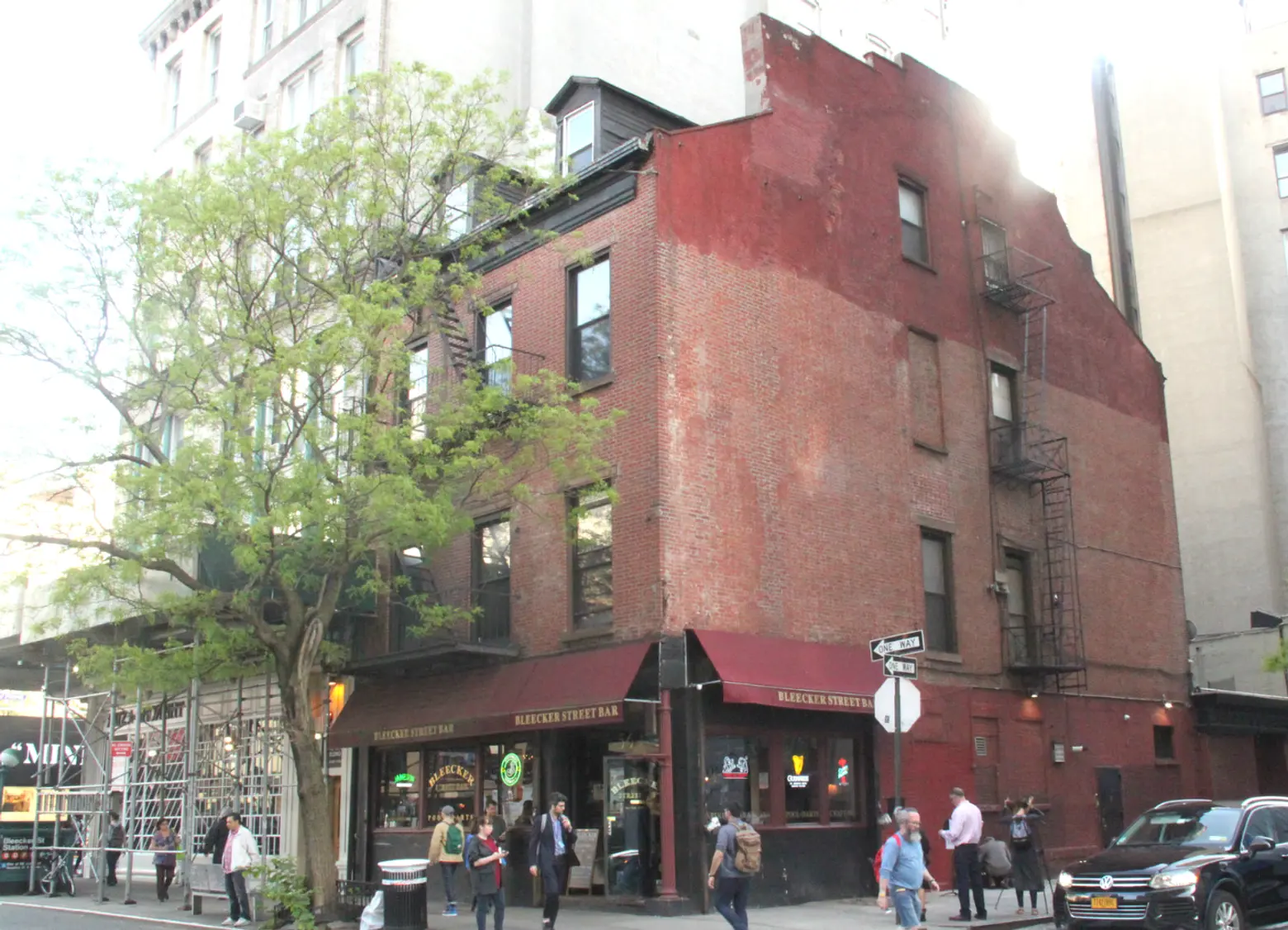 58 Bleecker Street, courtesy of GVSHP
58 Bleecker Street, courtesy of GVSHP
The needs of the poor immigrant communities served by Blackwell soon outgrew the small dispensary on East 7th Street. In 1857 Blackwell, established the first hospital for women, staffed by women, and run by women, called The New York Infirmary for Women and Children. It was located in the house at 58 Bleecker Street, at the corner of Crosby Street, which was originally numbered 64 Bleecker Street.
Built in 1822-1823, the house was erected for great-grandfather of Franklin Delano Roosevelt, James Roosevelt, who lived there until his passing only ten years before Blackwell began renting there. Blackwell’s hospital opened its doors on May 12, 1857, the 37th birthday of Florence Nightingale, whom Blackwell had befriended earlier in her career.
The hospital was open seven days a week and provided medical care for needy women and children free of charge. The staff at first consisted of Elizabeth, director; her sister Emily Blackwell, surgeon; and Dr. Marie Zakrewska. The hospital provided practical medical instruction for women studying for their medical degree, which was unavailable elsewhere. The hospital was operated solely by a staff of women, and its opening was attended and praised by the noted abolitionist preacher Rev. Henry Ward Beecher.
However, many others were not enthusiastic about this enterprise, and according to Blackwell she was told that no one would rent her a space for this purpose, that the police would shut the hospital down, that she would not be able to control the patients, and that no one would financially support such an institution.
However, the hospital was able to succeed, and over time views on women in medicine evolved. The hospital was responsible for innovations in hygiene critical in preventing disease and in educating the public on those benefits, such as bathing ailing patients and encouraging them to keep clean. Blackwell also launched a “Sanitary Visitor” program to visit the needy in their homes in the slums and improve hygiene. The program later expanded into the hospital’s “Out Practice Department,” a precursor of the Visiting Nurse Service. The first Sanitary Visitor, Rebecca Cole, was also the second African American woman to become a doctor in America.
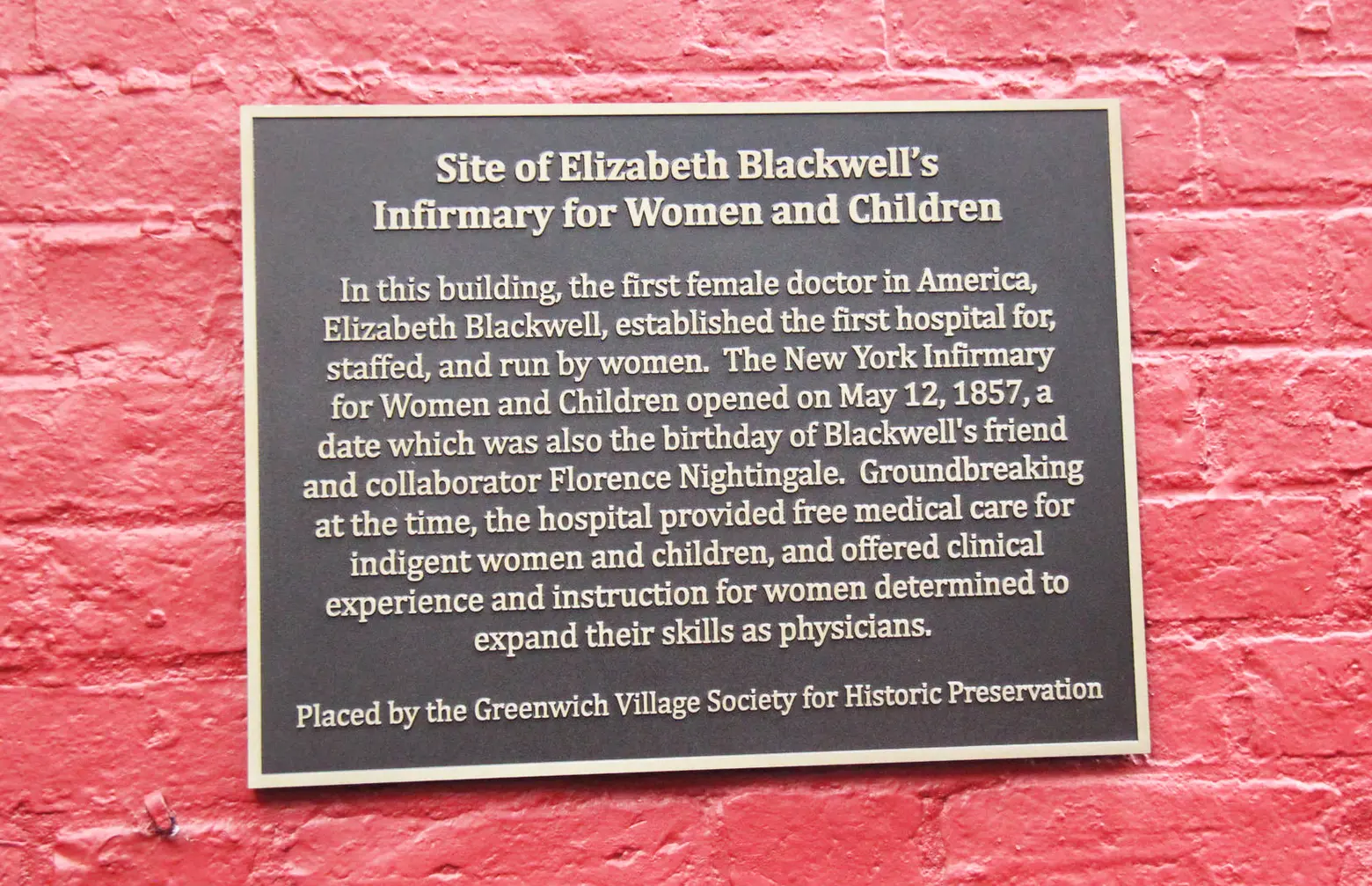 The plaque, courtesy of GVSHP
The plaque, courtesy of GVSHP
The building still stands and is located within the Noho Historic District. This past Monday, GVSHP placed a historic plaque upon the building as part of a larger celebration commemorating Blackwell’s work and the legacy of the New York Infirmary.
Women’s Medical College of the New York Infirmary, 128 Second Avenue
 1868 Announcement for the Woman’s Medical College of the New York Infirmary, courtesy of the National Library of Medicine
1868 Announcement for the Woman’s Medical College of the New York Infirmary, courtesy of the National Library of Medicine
This is the site of the first female medical school and women’s medical hospital in the United States, established in a house originally numbered 126 Second Avenue, between East 7th and East 8th Streets in 1868.
Blackwell, along with Dr. Marie Zakrzewska and her sister Emily, opened and operated the college and infirmary to provide both training to aspiring female doctors and medical care for poor women and children. Not only was this institution the first to offer women medical training and to prioritize female medical care, it was also staffed entirely by women. The Women’s Medical College of the New York Infirmary was also ahead of its time in that it offered four-year educational programs during a time in which medical schools, catering almost exclusively to men, only offered two-year programs. In its thirty-one years of successful operation, the Women’s Medical College educated more than 350 female physicians.
 Google Street View of 126 Second Avenue, today number 128
Google Street View of 126 Second Avenue, today number 128
The infirmary was located in a converted rowhouse built in the early 19th century; that building was demolished and the site is currently occupied by a tenement built in 1899.
+++
You can read more about this and other GVSHP historic plaques here, and further explore this and other historically significant sits on GVSHP’s Civil Rights and Social Justice Map.
This post comes from the Greenwich Village Society for Historic Preservation. Since 1980, GVSHP has been the community’s leading advocate for preserving the cultural and architectural heritage of Greenwich Village, the East Village, and Noho, working to prevent inappropriate development, expand landmark protection, and create programming for adults and children that promotes these neighborhoods’ unique historic features. Read more history pieces on their blog Off the Grid
RELATED:

